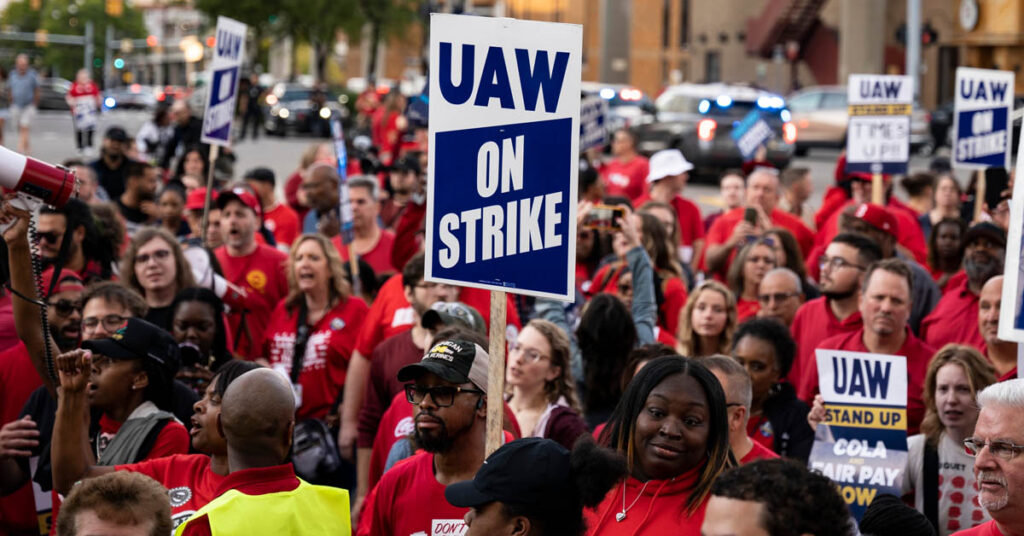Nationwide job growth slowed in October, stalled in part by a labor impasse between Detroit automakers and the United Auto Workers (UAW) union.
Nonfarm payroll growth for the month was at 150,000 jobs, according to the U.S. Bureau of Labor Statistics, a big decrease from some 297,000 additions in September. September’s gain remains strong even after a downward revision that excised 39,000 jobs from the original estimate.
October’s gain widely missed consensus expectations, with economists polled by Reuters projecting a rise of 180,000.
In particular, the manufacturing sector took a big hit, shedding 35,000 jobs. The vast majority of the subtractions came via the auto industry and were tied to the UAW strike at General Motors, Ford, Stellantis (parent company of Dodge, Chrysler and Jeep) and Mack Trucks. These losses, however, look to be transitory, as last week’s news of a tentative contract agreement between UAW and Ford could signal a larger peace between the union and Detroit car companies.
On the flipside, the scarcity of existing home listings continues to buoy the job market in residential construction, observed Ksenia Potapov, economist at First American Financial Corp.
“Residential building construction employment was up 0.6% year over year while non-residential was up by 5.5%,” she said. “Compared with pre-pandemic levels, residential building employment is up 11.7%, while non-residential building is up 3.3%.
“The continuing strength of the construction labor market may be surprising, but it’s reflective of broader housing market dynamics today,” Potapov added. “Builders are benefiting from a lack of resale inventory as existing homeowners remain rate-locked in.”
The U.S. unemployment rate, meanwhile, rose from 3.8% to 3.9%, reaching its highest level since the beginning of last year. And wages rose less than expected on a month-over-month basis, growing 0.2% from September and missing economists’ expectations by 0.1 percentage points. Annual wage gains slowed too, from 4.2% in September to 4.1% in October.
Even with the end of the UAW strike likely to reverse the manufacturing dip next month, the underlying weakness in October’s report provides more fuel to Federal Reserve observers who hope to see the central bank extend its pause on rate hikes after its December meeting. Labor is clearly cooling, although on a broad scale, the employment market’s resilience in the midst of the Fed’s aggressive monetary policy still has remarkable staying power.
CoreLogic chief economist Selma Hepp expects the moderation to continue, although maybe not as drastically as one would think.
“Today’s jobs report confirms the nation’s economy is still resilient despite rapid and appreciable tightening of financial conditions,” she said. “Going forward, moderation of job gains is expected, though the imbalance between labor supply and demand suggests wage growth will take more time to loosen up. Overall, employers are less selective on the qualification requirements for positions and remote work continues to be used to attract talent from a national pool. There is no obvious reason for this trend not to continue.”








